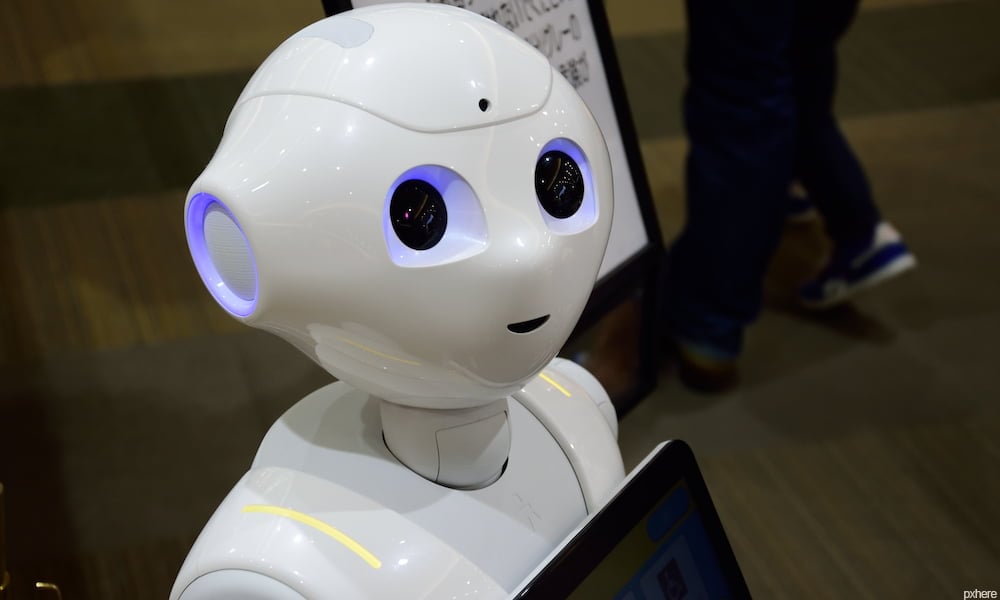How has your workplace gotten smarter? Most companies are now using collaboration tools for online meetings and remote team cohesion, which has been a significant transformation for physical offices. However, just about everything in business is evolving with digital transformation improving operations, teamwork, security, productivity, and knowledge management – to name just a few areas now relying on smart techs like robotics, automation, AI, and machine learning.
Change In Workplace Teams
You’ll find streamlined communications technologies like Zoom, Slack, Microsoft Teams, Nextiva are helping workers communicate from a distance.
Smarter data analytics changing everything about consumer market patterns and how businesses use the information in their customer discovery, lead generation, sales, and retention processes.
Plus, safety technologies and worker surveillance is helping manufacturing teams protect their workers. AI is also crucial in cybersecurity systems for managing large volumes of risk data.
AI has already—permanently—changed the workplace. But terms like ‘robotics,’ ‘AI,’ and ‘machine learning integration,’ still bring to mind a future that feels far away, says Zain Jaffer, CEO of Zain Ventures and host of PropTechVC. Jaffer is an entrepreneur, an active mentor, and a tech and real estate investor.
The truth is every team operating today has a connection to enhanced intelligence, whether it’s something they’re encountering in their own operations or the competitive advantage they’re contending with from their industry peers.
Zaffer also believes one of the significant areas of impact for artificial intelligence in the workforce is the quieter effect on workplace teams; how they’re composed, maintained, managed, and engaged.
So where exactly is AI proving a gamechanger for workplace teams? There are three core areas of digital transformation including:
- The smart co-worker
- Knowledge distribution
- AI and team composition
AI and Team Composition in the Construction of New Pyramids
Agility, according to Jaffer, is a team’s most valuable attribute. Much research was released during the pandemic’s difficulties on the proven efficacy of more flexible team structures.
Teams must be lean and flexible.
Lean and agile teams may better self-distribute their contributions across required tasks and pursue the broader objective autonomously. According to Jaffer, the outcomes are typically better than what a manager or company might achieve via a top-down strategy.
Robotics in the workplace will support a more dispersed approach rather than removing the requirement for creative, self-directed job activities.
Larger teams will be self-contained under the supervision of ‘robot bosses,’ intelligent technology-enabled’managers’ who will be able to monitor project allocation using AI-powered algorithms and software.
Smart machines may help teams coordinate better, manage deadlines, change delivery schedules, and measure results in sales, financial outcomes, and customer happiness.
Is there a robot team leader?

The thought of a robot managing a team may sound far-fetched, but integration with cloud communication tools should make this shift seamless before the end of the decade.
Empowering those technologies to take some of the project management inherent in employee communication into their own ‘hands’ will save time and money.
While this is a gradual transformation, it should not be feared; this approach to autonomous team management should boost employee satisfaction while freeing managers for more vital and innovative activities.
Knowledge Distribution Made Smarter
Employees on the same team have to grasp domain-specific skills and designations in today’s workplace. A social media manager, an email marketing professional, a content writer, a researcher, an SEO specialist, and so on make up a content team.
More prominent groups may join together under an intelligent management system thanks to the new robotics-powered approach to teamwork. Employee silos may begin to break down without losing momentum since bigger teams can be accommodated, and greater cooperation can occur orderly.
A more broad collection of talents among contributors might speed up development. Robotics integration will eventually result in fewer designations across the firm. Rather than pre-programmed structures and titles, hierarchies will be defined by an employee’s whole skill set. Knowledge will take precedence over job rank.
Employee productivity
Jaffer also feels that a more comprehensive view of an employee’s performance and potential might help decide their pay and duties within the company. More AI-driven data, like virtually everything else, will help remove bias from business choices and guarantee that all of the company’s employees are put to the greatest possible use.
The Smart Coworker Phenomena, Side by Side
As a culture, we’ve become used to the assistance of robotic helpers. The fact that our voice can switch off the lights or activate Alexa’s weather reporting was a significant, if little, step in the right direction. Smart assistants may also be the initial point of contact for robotic ‘coworkers’ in the workplace.
On a personal level, intelligent personal assistants at work may aid with task management, communications, and data analysis relating to the employee’s project or daily activities. However, the subsequent development will be enormous.
A robot coworker, perhaps?
Robotic-assisted technology can function around the clock without incurring the typical human expenditures. According to Jaffer, middle management jobs and repetitive work might happen overnight.
Robots may assist with certain day-to-day decision-making, such as job delegation and task prioritizing based on predictive analytics, thanks to their efficiency, expertise, and data-based understanding.
Employees will quickly feel that a clever and competent teammate has been working on their behalf overnight when they log back into work or return to the office in the morning.
These insights are based on data will be a huge plus. Far from being a nightmarish ‘robot takeover,’ robots in the workplace may assist sectors in achieving the long-term aim of data-driven decision-making devoid of bias, prejudice, and hierarchy.
Data can help firms choose the ideal team member for the job and ensure that their compensation structure matches where the value is created. Without outside interference or the fear of offending sentiments, smart computers can honestly report on the success of projects.
Jaffer’s concluding point is that the workplace may be where people are empowered, talent is appreciated, and resources are distributed equally. It’s a positive approach, and each day brings us closer.


